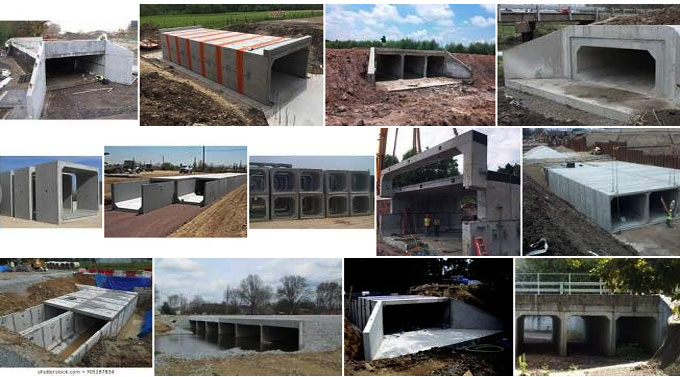
Design of Box Culverts
A culvert is a drainage structure designed to pass on storm water or stream of constrained flow over a street. Culverts can comprise single or multi-span development, with a base inside width of 6 meters when the estimation is made horizontally along the centreline of the street from eye to eye of side dividers.
In fact, any such structure with such span more than 6 m isn't a culvert yet can be treated as a scaffold. Box culverts comprise two horizontal pieces, and at least two vertical side dividers which are constructed solidly.
For appropriate execution of culverts in their design life, there must be water powered design, which will give the geometric measurements or openings that will pass on the design flood. It is average for culverts to be designed for the pinnacle flow pace of a design tempest of satisfactory bring period back.
The pinnacle flow rate might be acquired from a unit hydrograph at the culvert site, or created from a stream flow and precipitation records for various tempest occasions.
Without pressure driven information, it is savvy to make preservationist presumptions dependent on visual assessment of the site, execution of existing culverts and other drainage frameworks, or by asking local people inquiries.
Structural Design of box culverts
Structural design starts when the structural design units get the culvert study, and pressure driven design report from the power through pressure unit. The report related to the street way designs will be utilized to register the culvert length, design fill, and different things that lead to the finished culvert plans.
Box culverts are generally dissected as inflexible edges, with all corner associations considered as unbending and no thought for sidesway.
The centreline of pieces, dividers and floor are utilized for registering section properties and for dimensional investigation. Standard filets which are not required for second or shear or both will not be considered in registering section properties.
The structural design of a fortified solid box culvert includes the itemized investigation of unbending casing for bowing minutes, shear powers, and hub powers because of different kinds of loading conditions laid out underneath:
(I) Permanent Loads
a. Dead Loads
b. Superimposed Dead Loads
c. Horizontal Earth Pressure
d. Hydrostatic Pressure and Buoyancy
e. Differential Settlement Effects
(ii) Vertical Live Loads
a. HA or HB loads on the carriageway (Load Model 1 of Eurocode)
b. Footway and Cycle Track Loading
c. Coincidental Wheel Loading
d. Development Traffic
(iii) Horizontal Live Loads
a. Live Load Surcharge
b. Footing
c. Temperature Effects
d. Parapet Collision
e. Coincidental Skidding
f. Outward Load
Concentrated loads
According to BD 31/01, no dispersal of load is necessary if the fill is less than 600 mm thick for HA loading. However, once the fill is thicker than 600 mm, 30 units of HB loads should be used with adequate dispersal of the load through the fill. This same concept can be adopted for LM1 of EN 1991-2.
Earth Pressure
Depending on the site conditions, at rest pressure coefficient ko = 1 ? sin (?) is usually used for analysing earth pressure.


